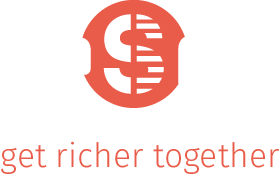The creation of a "to be" business model
The research phase of the transition to dia$par. The company's staff and dia$par integrator's team brainstorm about a unified vision of the way the company must operate.
| Trading | Manufacturing | Service |
| 33% | 33% | 33% |
|
|
|
|
|
|
|
|
|
|
2025
|
2026
|
2027
|
2028
|
2029
|
2030
|
2031
|
2032
|
The research phase of the transition to dia$par. The company's staff and dia$par integrator's team brainstorm about a unified vision of the way the company must operate.
The "to be" business model is formalized in the statement of work: the architecture of the digital twin is designed.
The list of core business processes and their logic is drawn up (the architecture of the future model): basic value chains (mchains), their integral parts (msteps) and roles of users.
The developers implement the agreed-upon "to be" business model into your company's cybernetic model (dia$par.Matrix).
All business processes are tested intensively in order to evaluate the model parameters.
As development progresses, the future users of dia$par (either staff members, customers or suppliers) test their parts of the business processes iteratively, while learning to use dia$par.
The developers make the necessary changes while getting feedback from the users.
The primary task of the model adaptation stage is to develop the minimum viable product (your company's digital twin with workable basic value chains) as fast as possible and make a transition to dia$par.
In terms of the construction industry, this stage is similar to finalizing the building shell and testing its utilities (running water, electricity, sewerage).
Basic business processes are managed by dia$par.

"Crisis-mode" operation: last-minute bug fixing.
While at the stage of the adaptation our objective was to develop your company's workable digital twin, the focus now is on users' comfort and productivity at every single part (mstep) of business processes.
The most active eleaders are already beginning to generate (still very) primitive mutual mapping responses which replace routine work done by the staff.
In terms of the construction industry, this stage is similar to joint polishing, wallpapering and furnishing.
When the transition to dia$par has been completed, you can give it a trial to recognize its pre-eminence in day-to-day operations.
Starts at the same time as Stage 4.
The effective cybernetic model optimised at the level of a single chain store is easily applied to all of them.
Carried out concurrently with Stage 5.

